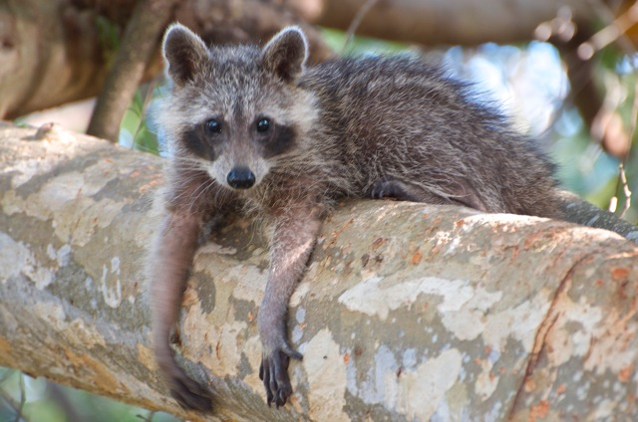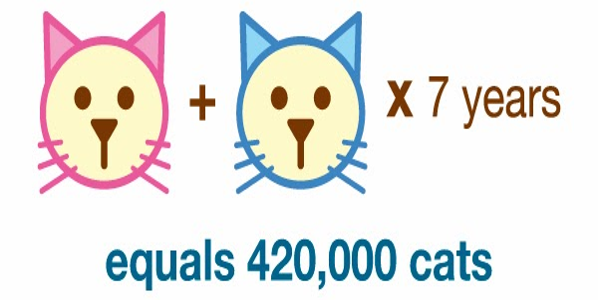Frequently asked questions (FAQ)
-
What is a "feral" cat?
A cat born in the wild, who has reverted to its wild state, or a former house pet, dumped outside and reverted to a wild state, distrusting of humans, living in colonies for survival. Feral kittens are wilder than parents and tend to get less friendly with each generation.
-
Are any "feral" cats friendly?
Some of the former house pets greatly miss the human bond/contact. They enjoy being petted and talked to and will often wait to eat until the petting is finished. Some learn their caretakers and allow only them to touch.
-
Why are these cats living in this park?
Some of the cats were born in the park. Others were abandoned. Unfortunately cats multiply very quickly if they have not been fixed.
-
How many cats are there?
Approximately 45. The amount varies according to what has been "dumped", rescued and adopted out, hit by a car or become too ill to survive and wandered off to die.
-
What is the average age of the cats?
Most of them are between the ages of 1 and 15 years old. CatPals tries to rescue any young kittens. Many of the older cats have lived in the park for years.
-
How long has CatPals been caring for the cats in the park?
CatPals was officially incorporated as a not-for-profit corporation in the year 2000. Each of the feeders could answer this differently. Cindy Martin the founder started feeding the cats out of kindness. CatPals tries to educate the public that all pets need to be spayed and neutered.
-
Are these cats in any danger living in this park?
Yes, unfortunately. There are many raccoons sharing the park with them. They compete for food, water and space. The raccoons will kill or injure any small kittens or sick and defenseless cats. The cats also face danger from the cars in the park and dogs that people let roam free. There is no real shelter from the rain for these cats. Life in the park is not easy for them. Homeless animals are a fact of life.

-
Why don't you just move the cats to somewhere else?
Unfortunately, there is nowhere else to move them. There are more stray cats then there are places to put them. If cats are removed from an area the "vacuum effect" happens.
-
What is the "vacuum effect"?
When cats are permanently removed from a colony, more cats move into the area. If the cats in the existing colony are all spayed and neutered, the size of the colony diminishes over time. If the fixed cats are removed, the new unfixed cats moving in will continue to breed and the size of the colony will continue to grow.
-
What is "ear tipping"?
While a feral cat is sedated to be spayed or neutered, a 1/4 inch of the ear is clipped off. This enables the caretakers of the colony, or anyone else, to determine who has been fixed. For a more detailed explanation, please see the information in the "About" section of this website.
-
What is T/N/R?
Briefly, it is Trap, Neuter and Return. A program proven to reduce colonies by having the cats spayed or neutered and returned to their colonies. For more information on TNR, please see Alley Cat Allies.
-
Why is T/N/R so important?
Here's an amazing, but true, statistic. The gestation period for a female cat is 65 days, they can begin to have litters at 6 months old and have several litters a year. Consequently, if all her offspring survive and they all produce more litters, ONE UNFIXED FEMALE, IN 7 YEARS, IS CAPABLE OF PRODUCING 420,000 CATS!!!!!

-
How do you get these cats to the park?
We don't ever bring any animal to the park. CatPals is only trying to help the cats dumped in the park to survive. CatPals will lose the right to implement T/N/R if the population goes up and not down. These are not our cats nor have they ever been. Just like you we are softhearted animal lovers that looked for a humane way to stop overpopulation.
-
Are the cats all adults or are there kittens too?
There are currently no kittens in the managed colonies. This is the goal. No new population.
-
Do these cats just show up, or do you catch them elsewhere?
At some point in time, someone dumped the first cat or two. The unaltered cat found a food source, others dumped found the same source and the colony began. Did you know that one cat and her kittens can have 420,000 kittens in just 7 years? Thank Goodness for T/N/R (please visit alleycat.org). CatPals has never and would never add to this colony. Our sole purpose is to reduce population and keep the current cats happy. The impact on our lives has been great. Consider having 75-100 kids scattered over 52 acres and feeding them 365 days a year? This is not a cat sanctuary. We are trying to manage a situation to humanely control the population. Continued dumping of pets will cause not only more work but possible ruin for our project. Remember the goal is lowered population through humane effort.

-
What age and gender is the most likely to be dumped off at the park?
The most dumped animal is a male less than two years old who has begun marking or a pregnant female.
